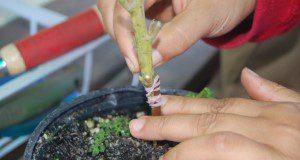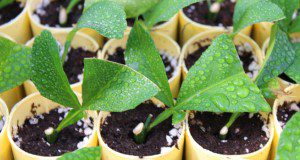Propagation is an important technique used by tropical and subtropical fruit growers worldwide, allowing plants to be grown cheaply and efficiently. While sexual propagation (by seed) results in plants that are not genetically the same as the mother plant, asexual propagation (cuttings, division, air-layers, and grafting) creates offspring that are clones of the mother plant. Cloning fruit trees is important because it allows different cultivars to be preserved over time. This new 7-page publication of the UF/IFAS Horticultural Sciences Department explains both sexual and asexual propagation techniques, why they are used, and what type of propagation is best for which species of tropical fruit. Written by Jeff Wasielewski and Carlos Balerdi.
https://edis.ifas.ufl.edu/hs1349
Tag: cuttings
Citrus Rootstock Propagation: Traditional Techniques and Recent Advances
Commercially grown citrus trees are usually composed of two parts: 1) the scion, which is the aboveground portion of the tree that produces the fruit, and 2) the rootstock, which comprises the root system and the lower portion of the trunk. This new 4-page publication, chapter 6 of the forthcoming Citrus Nursery Production Guide, discusses three kinds of rootstock propagation: seed, cuttings, and tissue culture. Written by Ute Albrecht, Lorenzo Rossi, and Mongi Zekri and published by the UF/IFAS Horticultural Sciences Department.
https://edis.ifas.ufl.edu/hs1329

